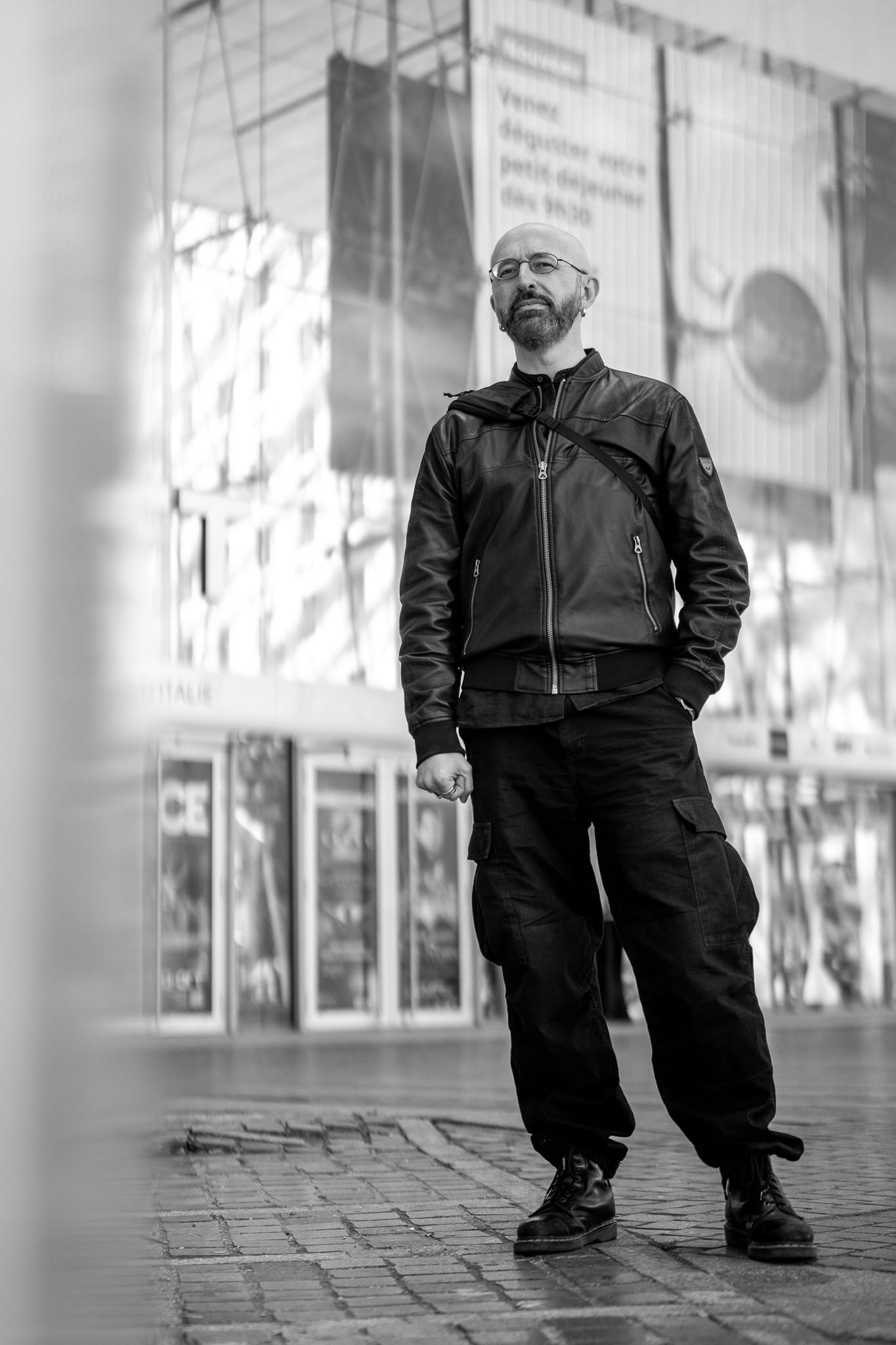Artificial intelligence (AI) is and will remain dependent on human labour. The people who do the work behind AI systems are often invisible. This carries risks of poor working conditions, low wages and inadequate protection for workers. How does this situation arise, and how can we ensure that the many invisible data workers also benefit from technological developments? For the WageIndicator Foundation’s Gig Work Podcast, I spoke with Professor Antonio Casilli (Institut Polytechnique de Paris), author of the book Waiting for Robots, the Hired Hands of Automation.
Scooby-Doo in the world of platform work
‘Me and my team are like Scooby-Doo: we travel all over the world investigating mysteries,’ says Casilli. ‘We conduct empirical research into artificial intelligence and how it is produced. Our focus is not on the new possibilities of AI, but on the development process: who is working behind the scenes to make AI possible?
His research team is called Diplab, which stands for Digital Platform Labor. They have developed a very broad view of automation.
The myth of automation
The dream of automating work is not new: Thomas Mortimer, among others, wrote in 1801 about a machine that would be capable of making human labour ‘almost completely superfluous’.
‘Technologists and economists have been looking for ways to make labour more efficient for centuries,’ says Casilli. ‘The industrial revolution saw the emergence of the first machines, such as the steam engine and the Spinning Jenny. Every innovation came with great promises. They would save us many hours of work. But nothing could be further from the truth.’
Many predictions about automation were overstated. Studies between 2013 and 2024 claimed that robots would replace 46-47% of all jobs. Casilli: ‘Organisations such as the OECD and ILO have shown that this is not true. Even with additional crises such as climate change, geopolitical tensions and a pandemic, global unemployment has not risen. In fact, in 2025, people will be working more than ever.’
The problem lies in the methodology used by these researchers, explains the professor. ‘They take a profession and break it down into tasks. If they expect AI to replace 60% of the tasks, they conclude that the job will disappear. But that’s not how it works in practice. Often, employees simply get new tasks.’
See also his research Waiting for robots: the ever-elusive myth of automation and the global exploitation of digital labour.
Influence of platformisation
According to Casilli, the biggest change in recent years is not automation, but platformisation. Companies such as Uber, Amazon and Meta use huge amounts of data to connect supply and demand and organise work. They also use all this data to train AI systems. For example, they build software such as ChatGPT (the P stands for ‘Pretrained’) and the technology behind self-driving cars.
‘What is often forgotten or ignored is how many people are involved in this,‘ says the researcher. “The promise of AI is that systems can take over human cognitive tasks. But in reality, many so-called ”automatic’ processes depend on human labour. The people who do this work are often invisible and poorly paid.’ This is not a recent phenomenon: Google, for example, has had its own platform, Raterhub, since 2007, where data workers verify search results and thus improve the search engine’s algorithms. Amazon Mechanical Turk, the platform used by Amazon and also available to external customers, makes a clear reference to the myth surrounding AI and its dependence on human labour. The Mechanical Turk after which the platform is named is the ‘chess robot’ invented in 1770, which travelled the world for 84 years as an example of automation. Later, it turned out that there was a person (often described as disabled or underage, in any case not a chess master) inside the machine and there was little automation involved.
Automation does not lead to less work, but to different, degraded form of work. ‘Big tech companies prefer not to talk about that. It undermines the narrative that AI is truly intelligent. In reality, people are working more than ever, but sometimes under worse conditions than before.’
Check here the full interview with Antonio Casilli on YouTube
Who are these data workers?
Data workers collect, organise and improve data. Without them, AI would not work. Take image recognition, for example: AI learns what a cat is by analysing millions of images of cats. ‘People have to label those images first. It seems like simple work, but it’s a skill in itself. Yet these data workers often receive remuneration that is not commensurate with their efforts,’ says Casilli. ‘In countries such as Kenya, the monthly wage for these data workers is around $400. That’s not enough to make ends meet.’
Casilli emphasises that this is not a temporary phase. ‘Data work will remain necessary as long as we continue to develop AI,’ he says. ‘We have to constantly train the systems, adapt them to new customer requirements and check them for errors. World Bank or Oxford estimates point towards a ballpark figure of 150 million such workers worldwide, and that number is only growing. That’s another reason why it’s important to take a critical look at their working conditions.’
You are a data worker too
Casilli ziet dat deze vorm van arbeid bestaande machtsstructuren en scheve arbeidsverhoudingen versterkt. Hij en zijn team hebben samengewerkt met beleidsmakers en vakbonden om dit aan het licht te brengen. “Tech-ingenieurs bij bedrijven zoals Google verdienen hoge salarissen, terwijl datawerkers in India, Venezuela en Madagascar onderbetaald worden. Dit volgt koloniale patronen. India voert datawerk uit voor Engelstalige landen, terwijl Franse bedrijven werk uitbesteden aan Franstalige landen in Afrika.”
What can we do?
What can we do about this? He describes this in the last chapter of his book ‘What is to be done?’, a tongue-in-cheek quote from Vladimir Lenin. According to Casilli, a systemic approach is needed to improve the conditions of all data workers worldwide. ‘A solution for a specific group will not work in the end. We need to look for a universal strategy.’
He distinguishes between three types of solutions: regulation, collective platform initiatives and a global redistribution system:
- Regulation: Spain, for example, has introduced the Riders’ Law and the European Union is working on guidelines for platform workers. “These are steps in the right direction, but this type of regulation needs to be applied more broadly. After all, tech companies operate globally.”
- Platform cooperatives: Workers can set up their own platforms in which they have a say in wages and working conditions. ‘This is already happening on a small scale, but deserves more attention.’
- Redistribution: Large tech companies can be taxed and the proceeds used for a universal basic income for data workers. Importantly, Casilli states that this UBI is neither connected to a “robot tax” (as he doesn’t see robots replacing workers) nor it is intended to replace welfare assistance (as it should be paid regardless of other social benefits). ‘This will ensure greater fairness.’
By combining these three strategies, the professor hopes that we can create a fairer and more sustainable system. ‘Tech companies must take responsibility for all their workers, including the invisible ones who manufacture their data,’ says Casilli. ‘I am concerned about this situation: wages are far below the minimum and even basic health and safety rules are not always observed.’

Casilli believes that organisations such as the WageIndicator Foundation and the Fairwork project are making an important contribution. ‘These organisations set standards for fair wages and working conditions, and these are desperately needed.’
Enforcement, collective action and user responsibility
After several interviews on this topic, I personally believe that, besides the solutions that Casilli provides, it is also important to enforce existing regulations. In countries where there are many underpaid data workers, there is a lack of supervision. This is partly due to strong lobbying by tech companies. That is why it is so important for workers to take collective action, for example via trade unions. These are underrepresented, although a number of interesting grassroots initiatives have emerged.
I also believe that (large) users of AI solutions must take responsibility. There are many discussions about responsible AI use. But I can no longer take a discussion about responsible AI seriously if it does not take into account the hidden workers.

Why this is important
Casilli and his team are uncovering an important mystery: AI is not a magical ‘black box’. In reality, millions of people work behind the scenes on these so-called ‘intelligent systems’. AI is presented as completely autonomous, and the extensive manual labour involved is often forgotten or ignored. This has serious consequences for the working conditions of these data workers.
If we really want to use AI responsibly, we must also consider the people behind the technology. I try to raise awareness of this issue and highlight it wherever possible. That is why I spoke earlier with Claartje ter Hoeven about Ghostwork: the invisible world of work behind AI. I will soon be speaking to the Data Labeler Association in Kenya to gain more insight into the conditions and problems faced by workers in Kenya. After all, we can only really get started with responsible AI if we understand how AI is created.
Want to know more? Listen to the full podcast with Antonio Casilli here. Check all podcast episodes via this link.